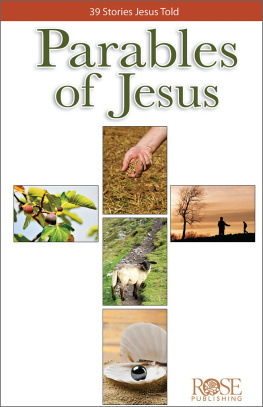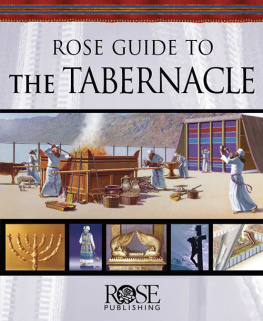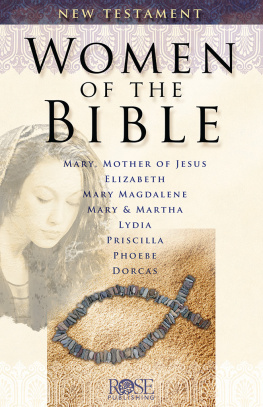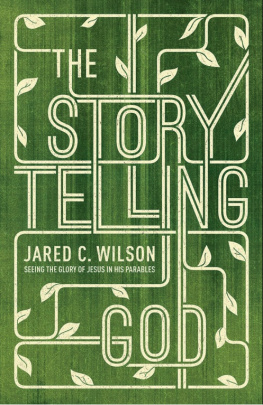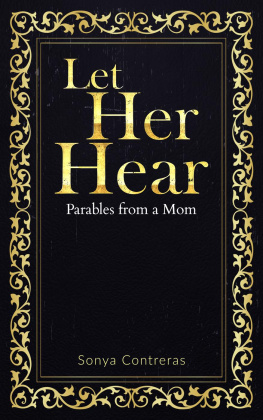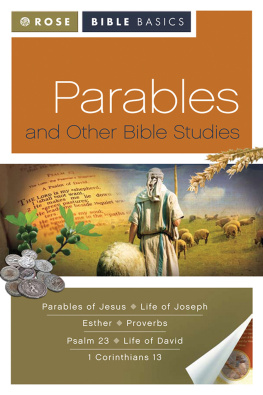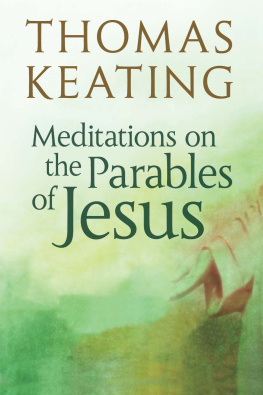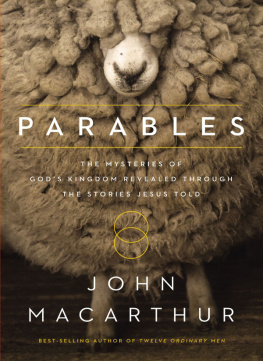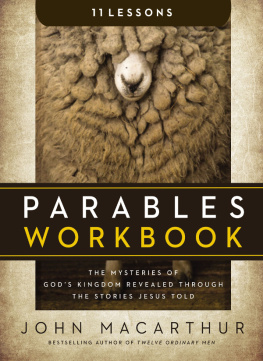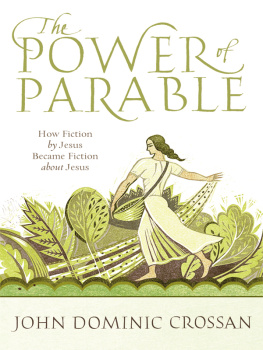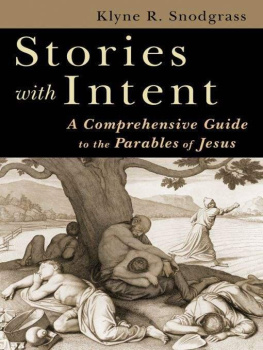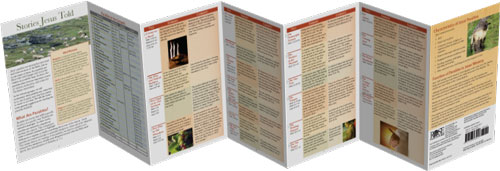The printed version of this eBook is the Parables of Jesus pamphlet, ISBN-13: 9781596363823
Contributing Authors: Benjamin Galan, MTS, ThM, Adjunct Professor of OT Hebrew and Literature at Fuller Seminary; Vincent Botticelli
It is illegal to photocopy, transmit electronically, post on the internet, or reproduce this pamphlet in whole or in part in any form.
2010 Bristol Works, Inc.
Rose Publishing, LLC
PO Box 3473
Peabody, Massachusetts 01961-3473 U.S.A.
Email: info@hendricksonrose.com
www.hendricksonrose.com
All rights reserved.
Parables of Jesus
This handy eBook:
- Explains all 39 parables and provides helpful suggestions on how to apply them to your daily lives.
- Includes a helpful chart that shows all 39 parables at a glance. For each parable, it includes simple summaries, Bible references, and more.
- Features a side-by-side comparison chart showing the scriptural location of each Parable in Matthew, Mark, and Luke. Easily see where to find the parables at a glance.
- Explains 7 key characteristics of Jesus' parables and an overview on what parables are and their purpose. (Provides great insight for teachers.)
Stories Jesus Told
Jesus parables are among the most read and loved sections of the Bible. Just as in the times of Jesus, the parables are filled with vivid images and touch the readers in powerful ways. In short, the parables have been an important source of wisdom, instruction, and solace for Christians everywhere.
In the following pages, we will understand what parables are, what they do in the Gospels, and why they matter so much to us today. We will also learn some general suggestions for reading the parables fruitfully.
What Are Parables?
Parables are stories that fulfill a specific function in a specific way. Parables are extended analogies. In other words, parables are extended comparisons between two objects. This comparison seeks to identify similarities or highlight differences to explain or clarify something about one of the objects. Some parables are extended similes or extended metaphors, others are brief allegories. This means that in our reading of the parables, we must be careful to not interpret the metaphors, similes, and allegories beyond what the Bible itself allows.
Word Pictures
Metaphor: Comparison of two objects, emphasizing a specific similarity or similarities. When the psalmist affirms that God is my rock (Ps. 18:2, 31; 42:9), we should not understand that God is literally a rock. Rather, the psalmist is comparing a specific characteristic of rocks with a specific characteristic of God. That is, just as rocks are solid and strong, so is God.
Simile: Like a metaphor, a simile is a comparison between two objects. However, the comparison is more evident, which makes the comparison more emphatic and vivid. Similes use the words as and like to make the comparison between the two objects obvious. When the psalmist writes, man is like a breath, (Ps. 144:4) the comparison is direct and clear. The parables of the kingdom of God that begin with the kingdom of God (or heaven) are examples of similes.
Allegory: An allegory is an extended metaphor. It refers to stories, poems, images, and words that convey meanings beyond the literal one. An example of an intended allegory in the New Testament is found in Gal. 4:2131, in which Sarah and Hagar stand for two covenants.
Parables in the Gospels
Parable | Scripture Verse |
1 A Lamp on a Stand | Matt. 5:1416 Mark 4:2122 Luke 8:1617; 11:3336 |
2 The Wise and Foolish Builders | Matt. 7:2427 Luke 6:4749 |
3 New Cloth on an Old Garment | Matt. 9:16 Mark 2:21 Luke 5:36 |
4 New Wine in Old Wineskins | Matt. 9:17 Mark 2:22 Luke 5:3738 |
5 The Sower | Matt. 13:39 Mark 4:29 Luke 8:48 |
6 The Weeds | Matt. 13:2430 |
7 The Mustard Seed | Matt. 13:3132 Mark 4:3032 Luke 13:1819 |
8 The Yeast | Matt. 13:33 Luke 13:2021 |
9 The Hidden Treasure | Matt. 13:44 |
10 The Pearl | Matt. 13:4546 |
11 The Net | Matt. 13:4750 |
12 The Lost Sheep | Matt. 18:1214 Luke 15:37 |
13 The Unmerciful Servant | Matt. 18:2335 |
14 The Workers in the Vineyard | Matt. 20:116 |
15 The Two Sons | Matt. 21:2832 |
16 The Tenants | Matt. 21:3345 Mark 12:112 Luke 20:919 |
17 The Wedding Banquet | Matt. 22:214 |
18 The Ten Virgins | Matt. 25:113 |
19 The Talents | Matt. 25:1430 |
20 The Growing Seed | Mark 4:2629 |
21 The Absent Householder | Mark 13:3437 |
22 The Creditor and the Two Debtors | Luke 7:4143 |
23 The Good Samaritan | Luke 10:3037 |
24 A Friend in Need | Luke 11:513 |
25 The Rich Fool | Luke 12:1621 |
26 The Watchful Servants | Luke 12:3540 |
27 The Faithful Servant | Matt. 24:4551 Luke 12:4248 |
28 The Barren Fig Tree | Luke 13:69 |
29 The Place of Honor | Luke 14:711 |
30 The Great Banquet | Luke 14:1624 |
31 The Cost of Being a Disciple | Luke 14:2535 |
32 The Lost Coin | Luke 15:810 |
33 The Prodigal Son | Luke 15:1132 |
34 The Shrewd Steward | Luke 16:113 |
35 The Rich Man and Lazarus | Luke 16:1931 |
36 The Obedient Servant | Luke 17:710 |
37 The Persistent Widow | Luke 18:18 |
38 The Pharisee and the Tax Collector | Luke 18:914 |
39 The Ten Minas | Luke 19:1127 |
Total Parables in each Gospel | Matthew: 20 Mark: 8 Luke: 27 |
Unique Parables in each Gospel | Matthew: 10 Mark: 2 Luke: 17 |
Interpretation of Parables
Parables can be difficult to understand.
- One problem is the chronological and cultural gap between Jesus and us. The parables are expressed with objects and experiences of daily life: parenthood, seeds and grains, trees and animals. However, these are things not always accessible for people today.
- A great deal of the effectiveness of the parables lies in their evocative power. The parables remind people of their lives and important things in their lives. Parables in the Bible are effective because the original audiences get them. Interpreting parables is like getting jokes; explaining a joke kills the joke. As modern readers, we may be too far removed from the original context to get the parables. Thus, we need to explain parables in such a way that we do not kill their effectiveness on todays audience.
Next page
